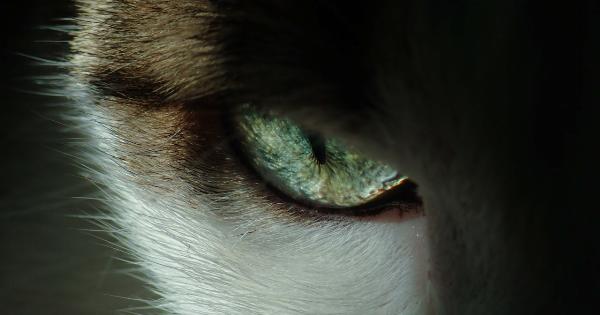Red and pink eyes in children can be caused due to various reasons. The condition is not always serious, but it is essential to identify the root cause of the problem to provide the right treatment.
In this article, we will discuss the symptoms and treatment options for red or pink eyes in children.
What Are Red or Pink Eyes in Children?
Red or pink eyes in children refer to a condition in which the eyes become red or pink due to the inflammation of the blood vessels present in the conjunctiva (a thin, transparent layer that covers the white part of the eye and the inner eyelid).
Causes of Red or Pink Eyes in Children
There can be various causes of red or pink eyes in children, including:.
- Bacterial conjunctivitis: It is caused by bacteria and is highly contagious. It can spread from one eye to the other and from one person to another through direct or indirect contact such as sharing towels, pillows, or toys.
- Viral conjunctivitis: It is caused by a virus and is also highly contagious. It can spread through sneezing, coughing, or touching infected surfaces.
- Allergic conjunctivitis: It is caused by allergens such as pollen, dust, or smoke. It can affect both eyes and is not contagious.
- Foreign Body: Sometimes, a foreign object such as dust or an eyelash can get into the eye, causing irritation and redness.
- Corneal abrasion: It is a scratch on the surface of the cornea that can cause redness and pain in the eyes.
- Blocked Tear Duct: It can lead to a buildup of pus in the eye, causing redness and swelling.
- Eye Strain: Prolonged use of electronic devices such as smartphones, tablets, or laptops can cause eye strain, leading to redness and discomfort.
Symptoms of Red or Pink Eyes in Children
The symptoms of red or pink eyes in children can vary depending on the cause of the problem. Some common symptoms include:.
- Redness: The whites of the eyes may appear red or pink.
- Tearing: The eyes may produce excess tears, making the eyes watery.
- Itching: The eyes may feel itchy and irritated.
- Burning Sensation: The eyes may feel a burning sensation, especially in bright light.
- Discharge: There may be a sticky or watery discharge from the eyes.
- Swollen eyelids: The eyelids may appear swollen and puffy.
- Sensitivity to light: The child may feel sensitive to light.
- Blurred Vision: The child may have blurred vision or difficulty in seeing clearly.
Diagnosis of Red or Pink Eyes in Children
Diagnosis of red or pink eyes in children involves a thorough eye examination by an ophthalmologist or an optometrist. The doctor may perform one or more of the following tests:.
- Visual acuity test: It measures how well the child can see and involves reading letters or symbols from a chart.
- Slit-lamp exam: It allows the doctor to examine the eye under high magnification using a special microscope.
- Eye pressure tests: These tests measure the pressure inside the child’s eye.
- Culture: If bacterial or viral infection is suspected, the doctor may take a culture of the discharge from the eyes to determine the exact cause of the infection.
Treatment of Red or Pink Eyes in Children
The treatment of red or pink eyes in children depends on the underlying cause of the problem. Some common treatment options include:.
- Bacterial Conjunctivitis: It is treated with antibiotic eye drops or ointments. It is important to complete the entire course of antibiotics as prescribed by the doctor to prevent the infection from returning.
- Viral Conjunctivitis: It usually resolves on its own within a few days. Cold compresses and artificial tears may help relieve the symptoms. In some cases, antiviral medication may be prescribed.
- Allergic Conjunctivitis: It is treated with antihistamines, decongestants, or steroids, depending on the severity of the symptoms.
- Foreign Body: The foreign object is removed using specialized instruments under local anesthesia.
- Corneal Abrasion: It usually heals on its own within a few days. Artificial tears and antibiotic ointment may be prescribed to prevent infection.
- Blocked Tear Duct: It usually resolves on its own over time. Massaging the tear duct or using warm compresses may help to open the blocked duct.
- Eye Strain: It can be prevented by limiting the use of electronic devices, taking frequent breaks, and practicing good eye care habits.
Prevention of Red or Pink Eyes in Children
Some effective tips for preventing red or pink eyes in children include:.
- Wash Hands: Encourage your child to wash their hands frequently, especially before touching their face and eyes.
- Avoid Sharing Personal Items: Do not share personal items such as towels, pillows, or toys that can transmit infection.
- Cover Mouth and Nose: Teach your child to cover their mouth and nose while sneezing or coughing to prevent the spread of infection.
- Clean Contact Lenses: If your child wears contact lenses, make sure they clean and disinfect them properly to prevent infection.
- Practice Good Eye Care Habits: Teach your child to avoid rubbing their eyes frequently and take regular breaks while using electronic devices.
When to See a Doctor
You should see a doctor if your child experiences persistent redness, pain, or discharge from the eyes and if the symptoms do not improve within a few days.
Seek immediate medical attention if your child experiences severe eye pain, loss of vision, or if there is a foreign object embedded in their eye.
Conclusion
Red or pink eyes in children can be caused by various factors. Early diagnosis and appropriate treatment can help prevent the spread of infection and relieve the symptoms.
Encouraging your child to practice good eye care habits and taking preventive measures can minimize the risk of developing red or pink eyes in children.




























